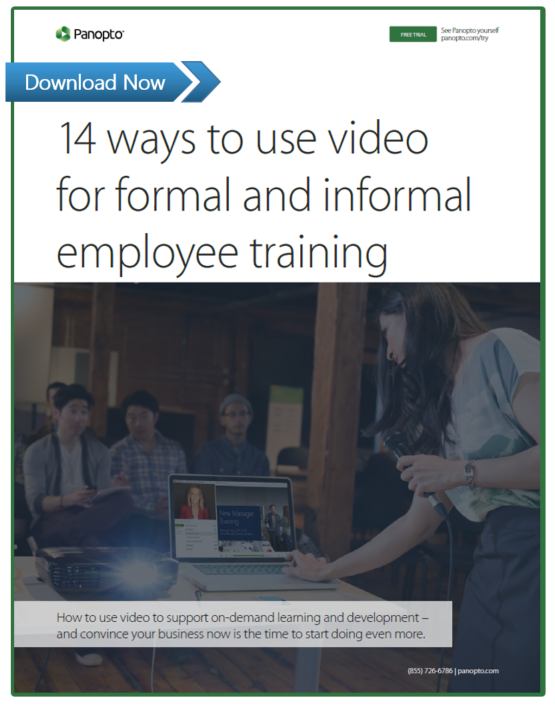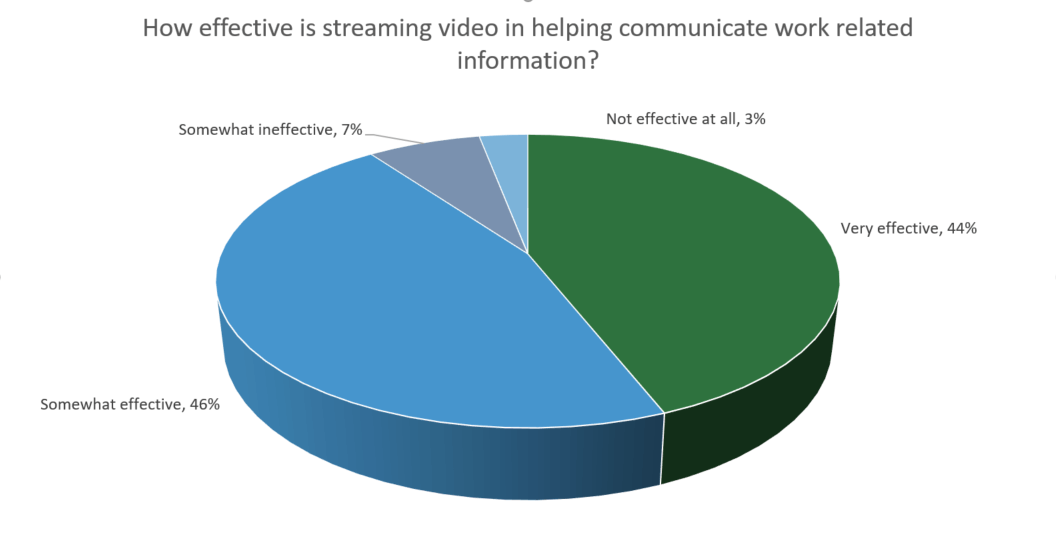- Communications
Video Learning — It Works And Employees Love It
How often do you view a YouTube video to learn something that helps you do your job? Once a month? Once a week? Daily?
Research has shown that half of all employees view YouTube videos for work-related information at least once a week.
Even more strikingly, nearly a quarter of them do so daily.
The cognitive science behind the benefits of video learning isn’t new; people tend to learn best when concepts are conveyed visually, and most of us comprehend abstract concepts better by watching demonstrations.
Learning and development, human resources, corporate communications, and other leaders responsible for improving learning and communication within their organizations have been using video for years because it’s a proven, powerful medium. And with video tools and technologies that now make it easier to produce, share, and search video content, a majority of companies are using video to support learning and communications more than ever before.
Video Learning Effectiveness
Wainhouse Research (WR) recently surveyed 1,800 working professionals about their experiences and attitudes towards video learning. And nearly everyone agrees that video learning works.
Source: Analysis of Video Learning Effectiveness – Wainhouse Research
90 percent of employees at companies of all sizes, according to the WR survey, find streaming video (both live and on-demand) is an effective tool for communicating work-related information. More specifically, workers believe that online video tools help improve work-related learning and knowledge sharing compared to traditional corporate training and communication tools alone.
WR’s research found a few of the reasons why employees feel video learning is so effective.
Video Learning Is More Flexible
Video-based online learning and communications offer learners greater control over when they learn, allowing them to absorb more of the content when they are focused or ready to apply new knowledge. According to the WR research, 79 percent of employees feel this flexibility and control improves the quality of learning at work.
Online Training Offers Better Access To Subject Matter Experts
Nearly three-quarters of employees agree that online training gives them better access to instructors and that interaction with instructors is equal to or greater than traditional in-class training.
Online and on-demand video courses give employees access to leaders and subject matter experts (SMEs) with whom they would normally not be able to learn from. Team leaders and SMEs are often pulled in many directions with competing priorities that don’t allow them to spend time training individuals one-on-one. But with video, SMEs can simply record the explanations and answers that others most often seek them out for — ensuring that everyone is able to benefit from their expertise, even when they aren’t available.
Related Reading: Video Learning Facts You Can Use to Make the Case for A Video Platform
Employees Love To Learn From Videos
In its analysis of video learning effectiveness, WR also segmented respondents by companies that were using video for training and those that did not. And in the companies that are using video for training, three times more employees felt video training was “very effective,” compared to employees at companies that do not engage in video training. In other words, when employees have access to video-based training, they love it.

Source: Analysis of Video Learning Effectiveness – Wainhouse Research
See how easy it is to record and securely share employee training videos that are optimized for online learning with Panopto’s free video and screen recorder >>
Expanding The Reach Of Your Corporate Classrooms With Video
 While many companies have been using video to improve training for decades, the tools for recording, hosting, sharing, and searching video content now make it much easier and cheaper to put video to work at scale. Today’s learning and development professionals already understand the potential that video offers — they just need the right set of tools to use video efficiently. What if you had your own corporate YouTube?
While many companies have been using video to improve training for decades, the tools for recording, hosting, sharing, and searching video content now make it much easier and cheaper to put video to work at scale. Today’s learning and development professionals already understand the potential that video offers — they just need the right set of tools to use video efficiently. What if you had your own corporate YouTube?
When Microsoft made the switch from classroom training to video learning, per-employee costs on those events dropped from $320 to just $17.
A corporate YouTube can help you improve the quality, consistency, speed, and effectiveness of your training efforts. With video, your team can:
- Solve skills gap challenges with “microlearning” tutorials
- Help employees trade expertise via social learning
- Make your compliance courses available on-demand
- Broadcast training and internal events for remote staff
- Engage employees with video messages that go beyond ordinary email
Get 14 ideas for using video to support formal and informal learning and development, plus a guide to convincing your business now is the time to start doing more training with video, in our new white paper.



